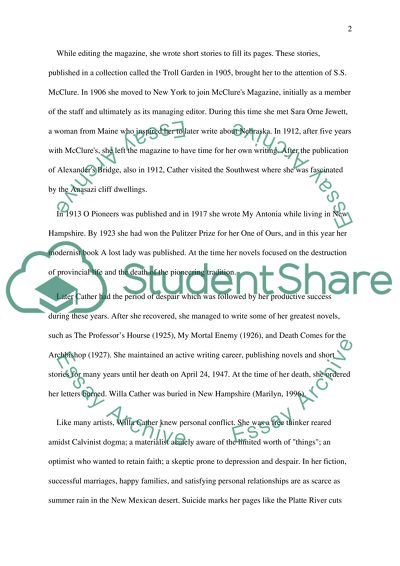Cite this document
(“Willa Cather Essay Example | Topics and Well Written Essays - 1500 words”, n.d.)
Retrieved from https://studentshare.org/biographies/1516444-willa-cather
Retrieved from https://studentshare.org/biographies/1516444-willa-cather
(Willa Cather Essay Example | Topics and Well Written Essays - 1500 Words)
https://studentshare.org/biographies/1516444-willa-cather.
https://studentshare.org/biographies/1516444-willa-cather.
“Willa Cather Essay Example | Topics and Well Written Essays - 1500 Words”, n.d. https://studentshare.org/biographies/1516444-willa-cather.


